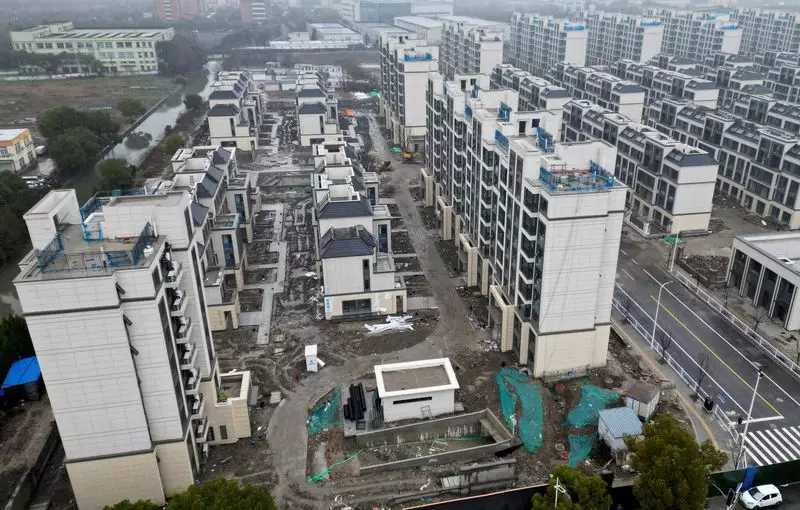China’s economic scene is facing tumultuous challenges, particularly within its property market. As the country grapples with a slowdown, the People’s Bank of China (PBOC) has taken decisive steps to alleviate the financial strain on homeowners by announcing a significant drop in mortgage rates for existing loans. This measure is vital to revitalize an economy that has become increasingly reliant on real estate activity, which, ironically, has faltered amidst rising global economic pressures and domestic concerns.
The PBOC’s directive to commercial banks to reduce existing mortgage rates by at least 30 basis points below the Loan Prime Rate (LPR) signifies a strategic shift in monetary policy aimed at tackling the challenges faced by the housing sector. By aiming to lower mortgage rates by an average of 50 basis points, the central bank hopes to ease the financial burden on existing homeowners. This policy follows a series of initiatives introduced throughout the year, including reductions in down-payment requirements and mortgage rates, all aimed at reinvigorating the stifled property market.
Despite these efforts, sales figures remain discouraging. Recent reports show that new home prices are declining more steeply than they have in nearly a decade, with property sales plummeting by 18% in the first eight months of the year. The urgency of the situation is underscored by these statistics, prompting the government to adopt a multi-faceted approach that not only includes interest rate cuts but also aims to address underlying confidence issues that have driven potential buyers away from the market.
The PBOC’s mortgage rate reductions are just one part of a broader initiative. In tandem with this, several major Chinese cities, including Guangzhou, Shanghai, and Shenzhen, have announced changes to their housing policies. The complete lifting of purchase restrictions in Guangzhou and the easing of rules in Shanghai and Shenzhen—targeted specifically at non-local buyers—demonstrate a recognition that revitalizing the property sector requires a shift in both financial and regulatory frameworks. By reducing the minimum down payment for first-time homebuyers to just 15%, local governments hope to stimulate demand.
These changes come shortly after China enacted one of its most significant stimulus packages since the onset of the COVID-19 pandemic. The government’s swift response signals awareness of the potential for further economic decline if immediate action isn’t taken to boost the housing market and, by extension, domestic consumption.
In its statement, the PBOC acknowledged that the existing mortgage rate pricing mechanism has become increasingly problematic, especially in light of changing market dynamics. The bank indicated that the previous framework favored new homebuyers while neglecting existing mortgage holders, who found themselves with high-interest loans and increasingly uneasy financial situations. Such discrepancies have driven many households to prioritize paying off their mortgages early, leading to a concerning reduction in discretionary spending.
Moreover, official data highlights that the outstanding value of personal mortgages has already decreased year-on-year, emphasizing the shifting behavior of consumers who are looking to navigate financial uncertainty by prioritizing debt reduction over other expenses.
As the PBOC and local governments work towards ultimately reinvigorating China’s property market, it remains clear that more comprehensive and sustainable measures will be required to restore buyer confidence. The current adjustments are essential and necessary, but they must be coupled with initiatives that also address long-term structural issues in the real estate market and the economy.
The collaborative approach that includes both monetary policy adjustments and regulatory changes is crucial. Future policies may need to consider broader economic indicators and consumer sentiments, ensuring that both developers and potential homebuyers find equal footing in accessing financial resources. Only by fostering a more resilient real estate market can China hope to spur economic growth and secure stability in its financial systems moving forward.

